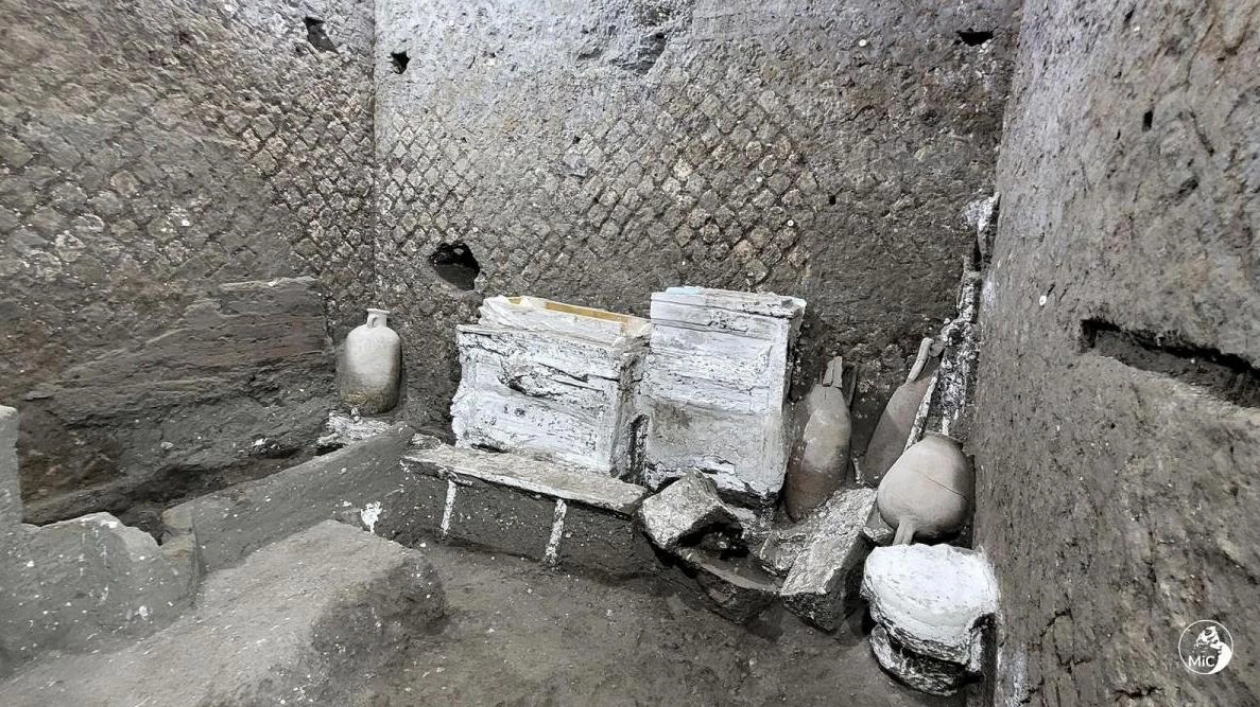A woman was found lying on a bed surrounded by gold, silver, and bronze coins, as well as jewelry, including gold and pearl earrings. A man was positioned at the foot of the same bed. Pompeii, a once-prosperous city near Naples, along with its neighboring areas, was engulfed by volcanic ash following the eruption of Mount Vesuvius in AD 79. This catastrophic event claimed the lives of numerous Romans who were unaware that they resided atop one of Europe's largest volcanoes. The city was encased in a dense layer of ash, which preserved many of its inhabitants and structures. The most recent victims discovered had sought shelter in a small room, awaiting the cessation of the rock fragment shower that had sealed the door, barring their escape. They ultimately succumbed to the lava and other scorching volcanic materials. "The chance to examine the invaluable anthropological data from the two victims... enables us to gather substantial information about the daily lives of ancient Pompeians," stated Gabriel Zuchtriegel, the site director. Pompeii, which was rediscovered in the 16th century, has experienced a surge in archaeological efforts in recent years, aimed at curbing the effects of decades of deterioration and neglect.

Text: Lara Palmer
12.08.2024
Discovery of preserved bodies in volcanic ash sheds light on daily life of ancient Pompeians





